A warning about invasive plants that could take over your yard
A Manitoba master gardener is warning Manitobans about accepting free plants as the growing season nears its end and people may be thinning out their flower beds.
Linda Dietrick, education director for the Manitoba Master Gardener Association told CTV News you may unknowingly be introducing an invasive species into the environment.
"Beware of free plants," she said. "If somebody offers you plants, 'Oh, I've got tons of that stuff,' please look it up online. It's really easy to Google these plants and find out whether they're invasive."
Dietrick said invasive species are plants not from here and they seem to get away from you when planted. She said when invasive plants take hold of an area the entire ecosystem is impacted starting with bugs and eventually the entire food chain. She said they're real problems when they get into natural green spaces or agricultural land.
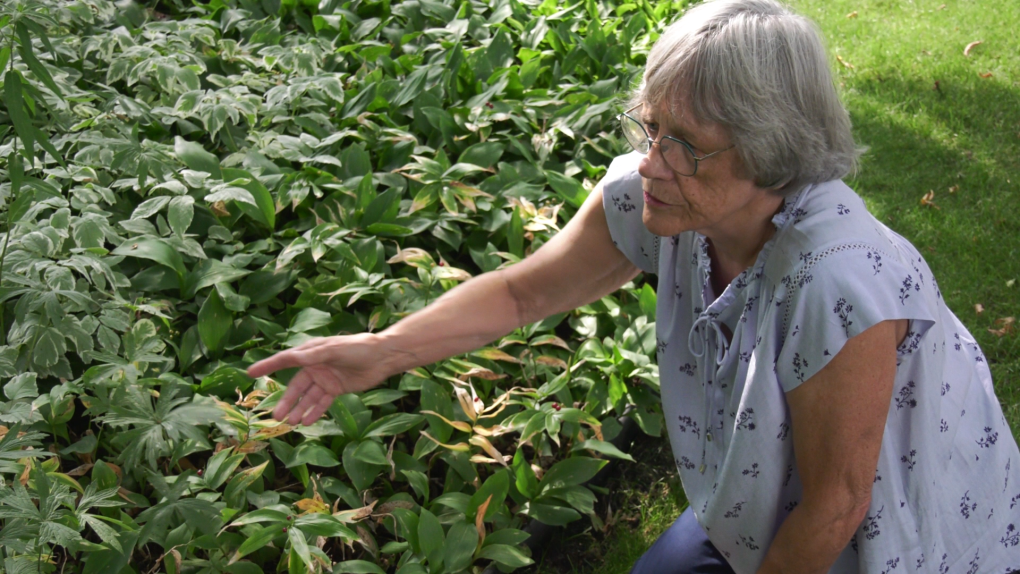 Master Gardener Linda Dietrick shows how native plants are being used to try and combat the spread of goutweed in a Winnipeg yard on Aug. 20, 2024 (Michelle Gerwing/CTV News Winnipeg)
Master Gardener Linda Dietrick shows how native plants are being used to try and combat the spread of goutweed in a Winnipeg yard on Aug. 20, 2024 (Michelle Gerwing/CTV News Winnipeg)
"They're like bullies and nobody likes a bully, especially a bully that has been extremely successful because that just makes them more successful and more of a bully," she said.
One species on her what-not-to-plant list is goutweed, also known as ground elder.
"There's a reason why your friends have so darn much of this stuff to give away," she said. "It's a snap to find somebody who will give you some free goutweed, but please don't plant it."
Dietrick said the plant has fine underground stems which go everywhere making it almost impossible to eradicate.
"If you do not get even a tiny fraction of an inch of those stems, it'll sprout again and come up in your yard," she said.
- The information you need to know, sent directly to you: Download the CTV News App
- Sign up now for daily CTV News Winnipeg newsletters
She added it can also revert from having white and green coloured leaves to just green, which means it has more chlorophyll making for more efficient photosynthesis.
Lynne McCarthy knows the perils of grappling with goutweed in Winnipeg. The avid gardener told CTV News she spent more than 20 years getting rid of it in her River Heights yard. She said when she bought her property it was just covered with goutweed.
Even today she has to 'patrol her borders' for the white and green variegated leaves. Just this week she pulled two stems from near her fence.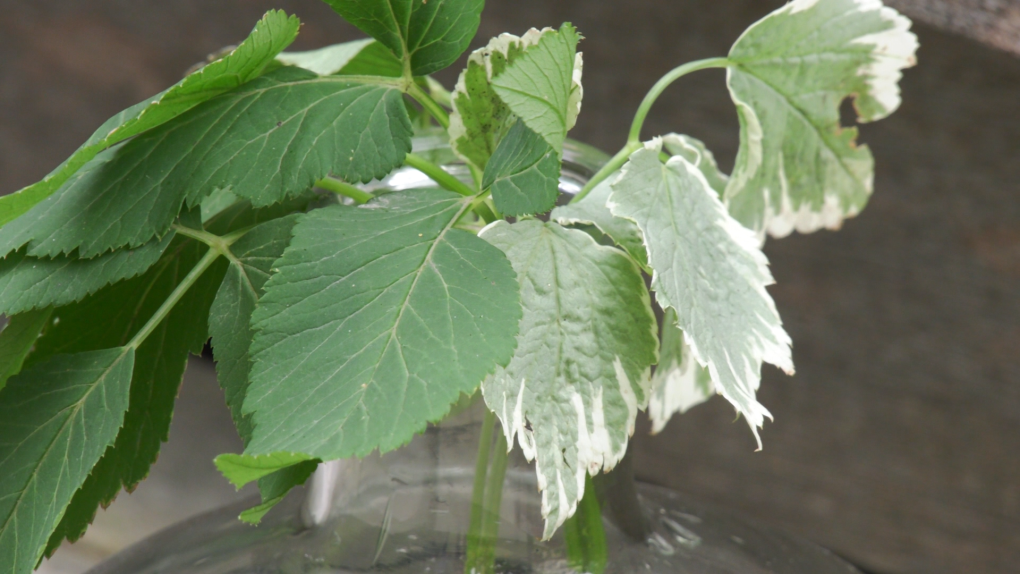 Stems of goutweed that Lynne McCarthy pulled from her yard on Aug. 20, 2024 (Michelle Gerwing/CTV News Winnipeg)
Stems of goutweed that Lynne McCarthy pulled from her yard on Aug. 20, 2024 (Michelle Gerwing/CTV News Winnipeg)
"It is terrible stuff," she said. "I have actually seen it's still for sale in the nurseries in the city and wonder why they sell it. It's really awful."
Dietrick agrees goutweed shouldn't be sold anymore in Manitoba.
At another property in Winnipeg, Dietrick showed CTV News how the homeowner is fighting goutweed with other native plants like ostrich ferns, Canadian anemone and star-flowered Solomon's seal.
McCarthy has since planted lamium as ground cover, which she said is not invasive and easy to get rid of if you don't want it anymore.
Goutweed is not a designated noxious weed in Manitoba.
But even if it was, Dietrick isn't convinced it would stop people from sharing it. She said there are several plants on the noxious weeds list that many people still like to grow on their property.
CTV News asked the province for comment on goutweed but a spokesperson said no one was available for comment at this time.
Here are five more invasive plants Dietrick has on her do-not-grow list:
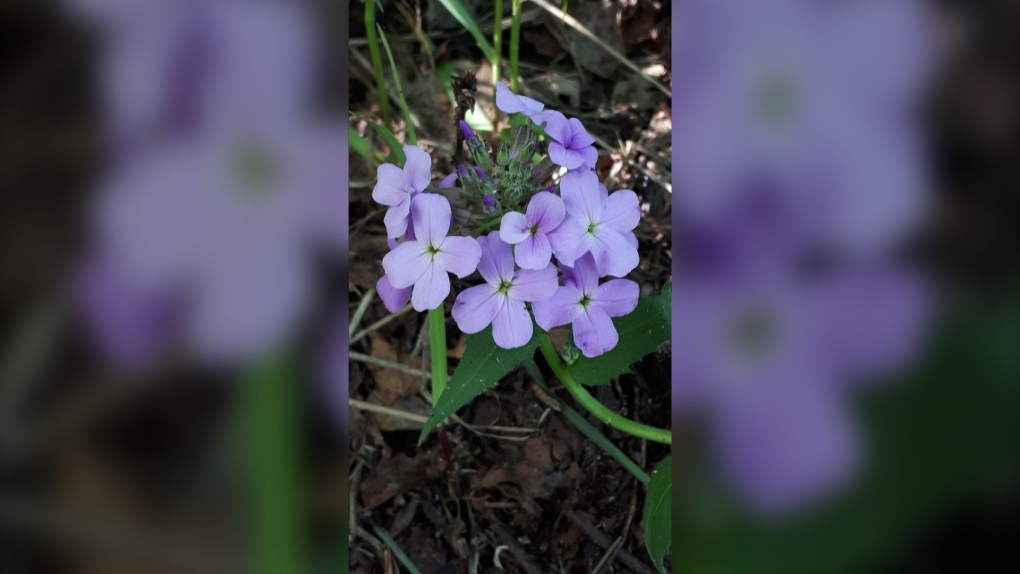 Dame's rocket pictured growing at Gull Harbour in Hecla (Grindstone) Provincial Park, Manitoba in an undated image (Photo by Séraphin Poudrier via iNaturalist, CC BY-NC)
Dame's rocket pictured growing at Gull Harbour in Hecla (Grindstone) Provincial Park, Manitoba in an undated image (Photo by Séraphin Poudrier via iNaturalist, CC BY-NC)
Dame's rocket
Not listed as a noxious weed in Manitoba
Dame's rocket is a pretty pink flower that is often misidentified and seeds can end up in wildflower mixes said Dietrick. She also said many states and provinces are not allowing it to be grown anymore because seeds can easily spread and can take over forest floors.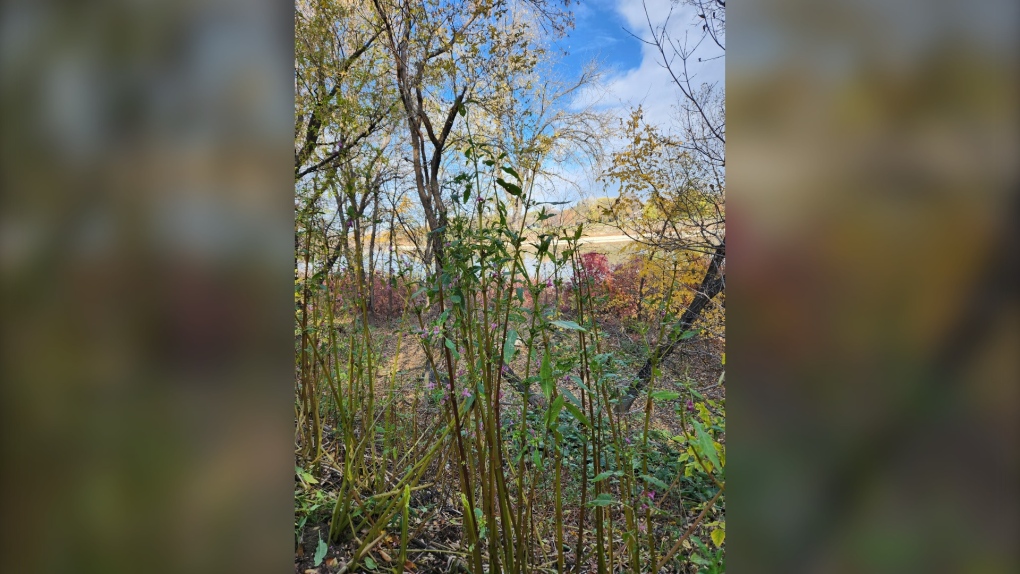 Himalayan Balsam photographed growing near Brandon Avenue, Winnipeg, Manitoba on banks of Red River in an undated image (photo by Yongsheng-Ye via Manitoba Master Gardener Association, CC BY-NC)
Himalayan Balsam photographed growing near Brandon Avenue, Winnipeg, Manitoba on banks of Red River in an undated image (photo by Yongsheng-Ye via Manitoba Master Gardener Association, CC BY-NC)
Himalayan balsam
Listed as an aquatic invasive species in Manitoba's Aquatic Invasive Species Regulation, M.R. 173/2015
Himalayan balsam is a type of impatiens. Its flower is often compared to a policeman's hat and Dietrick said its seeds explode in the wind. The possession/transport of aquatic invasives is prohibited under the Manitoba Water Protection Act, Sec. 3.1.29.4.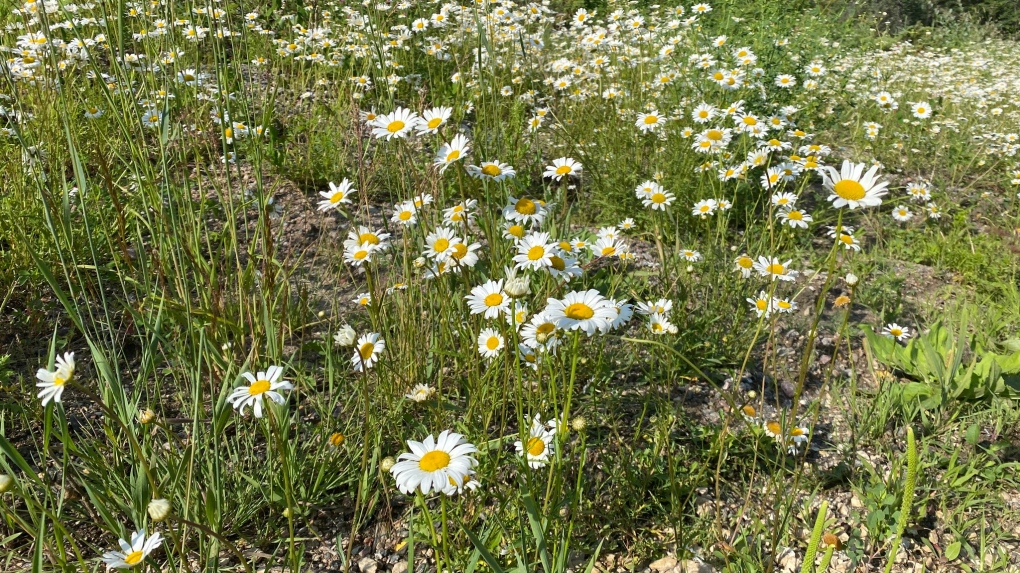 Oxeye daisy pictured growing in Whiteshell Provincial Park, Manitoba in an undated image (photo by cwgspeirs via iNaturalist, CC BY-NC)
Oxeye daisy pictured growing in Whiteshell Provincial Park, Manitoba in an undated image (photo by cwgspeirs via iNaturalist, CC BY-NC)
Oxeye daisy
Designated tier 2 noxious weed in Manitoba
Oxeye daisies spread like crazy, Dietrick said, can be found on sale at nurseries and mixed in with wildflower seed packets. She also said other daisies that are closely related can revert back to being fertile.
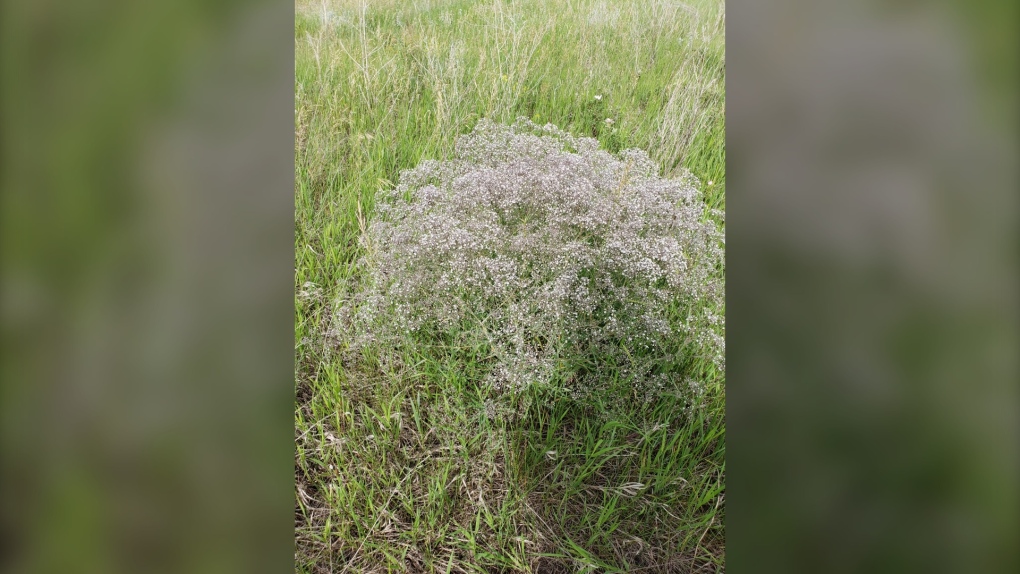 Common Baby's Breath spotted growing in Oak Lake, Manitoba in an undated image (photo by Carla Church via iNaturalist, CC BY-SA)
Common Baby's Breath spotted growing in Oak Lake, Manitoba in an undated image (photo by Carla Church via iNaturalist, CC BY-SA)
Common baby's breath
Designated tier 2 noxious weed in Manitoba
Common baby's breath can be found in the Whiteshell said Dietrick. At the end of the season, she said it turns into a tumbleweed, spreading seeds everywhere.
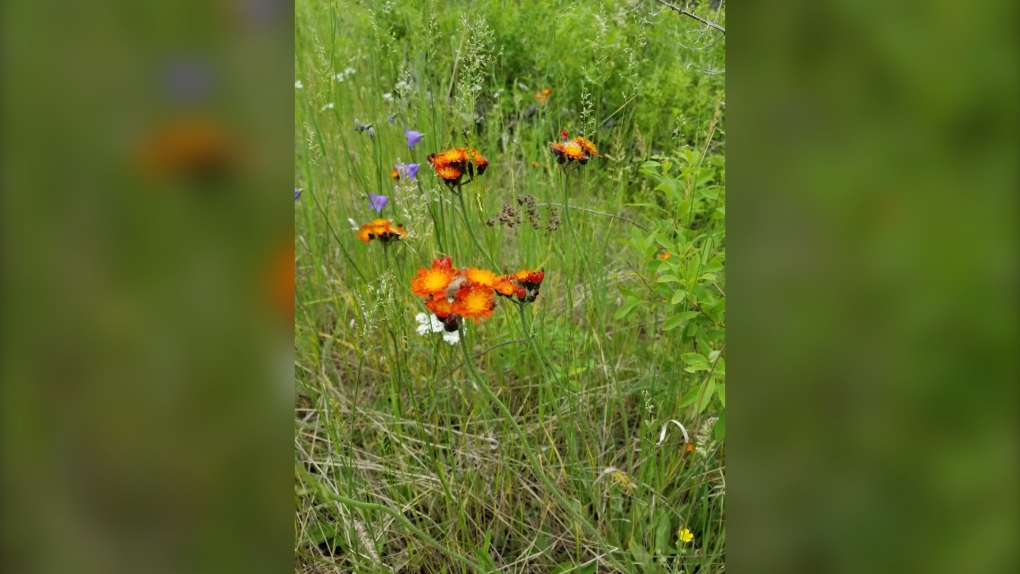 Orange Hawkweed pictured in White Lake, Manitoba in an undated image. (Photo by woodleecove via iNaturalist, CC BY-NC)
Orange Hawkweed pictured in White Lake, Manitoba in an undated image. (Photo by woodleecove via iNaturalist, CC BY-NC)
Orange hawkweed
Designated tier 1 noxious weed in Manitoba
Dietrick describes orange hawkweed as a major emergent problem in Manitoba because people see it, love it and dig it up to take home. She said it has been declared invasive in many parts of the northeastern United States because it is almost impossible to eradicate.
CTVNews.ca Top Stories

Trudeau promoting backbenchers in sizable cabinet shuffle coming Friday: sources
Prime Minister Justin Trudeau is planning a sizable cabinet shuffle on Friday, and it's shaping up to see several Liberal backbenchers promoted to ministerial posts, sources confirm to CTV News.
Prime minister's team blindsided by Freeland's resignation: source
The first time anyone in the senior ranks of Prime Minister Justin Trudeau's office got any indication Chrystia Freeland was about to resign from cabinet was just two hours before she made the announcement on social media, a senior government source tells CTV News.
'Tragic and sudden loss': Toronto police ID officer who died after suspected medical episode while on duty
A police officer who died after having a suspected medical episode on duty was executing a search warrant in connection with an ongoing robbery investigation in North York, Toronto police confirmed Thursday.
Ontario town seeks judicial review after being fined $15K for refusing to observe Pride Month
An Ontario community fined $15,000 for not celebrating Pride Month is asking a judge to review the decision.
The Royal Family unveils new Christmas cards with heartwarming family photos
The Royal Family is spreading holiday cheer with newly released Christmas cards.
EXCLUSIVE Canada's immigration laws 'too lax,' Trump's border czar says
Amid a potential tariff threat that is one month away, U.S. president-elect Donald Trump's border czar Tom Homan is calling talks with Canada over border security 'positive' but says he is still waiting to hear details.
Who received the longest jail terms in the Gisele Pelicot rape trial?
A French court found all 51 defendants guilty on Thursday in a mass rape case including Dominique Pelicot, who repeatedly drugged his then wife, Gisele, and allowed dozens of strangers into the family home to rape her.
Crowd crush kills 35 children at funfair in Nigeria, police say
At least 35 children were killed and six others critically injured in a crowd crush at a funfair in southwest Nigeria on Wednesday, police said.
Scientists think they know why Stonehenge was rebuilt thousands of years ago
Scientists made a major discovery this year linked to Stonehenge — one of humanity’s biggest mysteries — and the revelations keep coming.

































